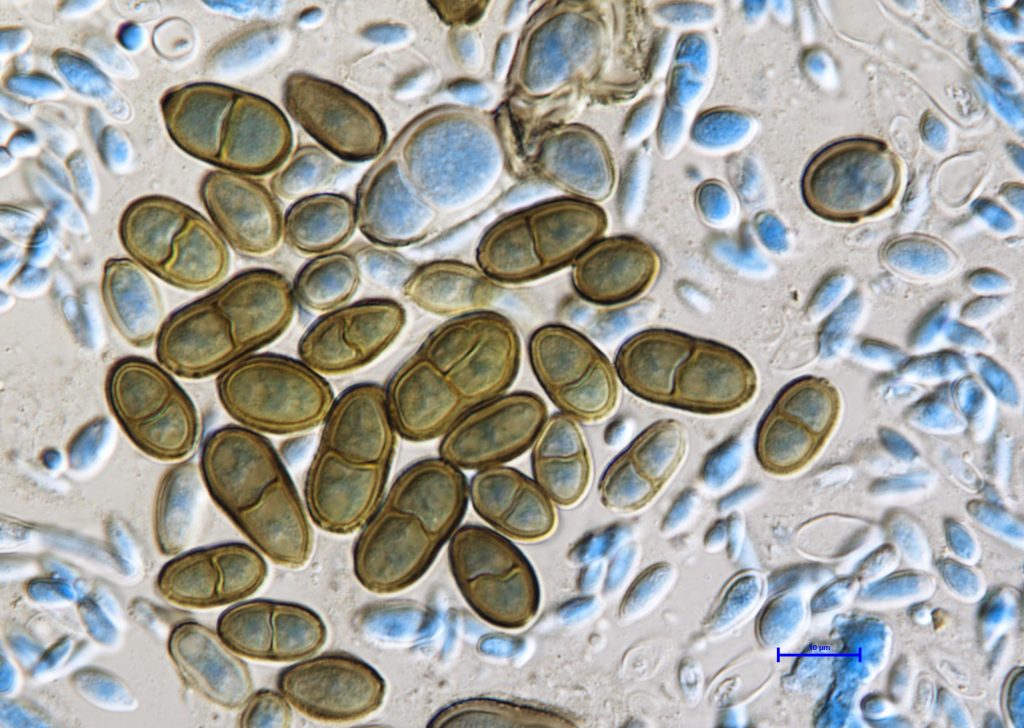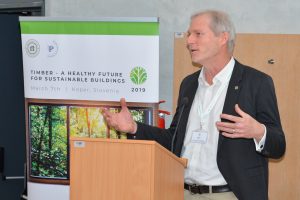
July 26, 2024


Yesterday, 7th March 2019, the InnoRenew CoE, in collaboration with the University of Primorska, hosted its first international conference: “Timber – A healthy future for sustainable buildings”, which brought to Koper more than 60 experts from different parts of Europe to present and discuss the latest findings about health, sustainability and wood in the built environment.
The conference began with a greeting from Director of the InnoRenew CoE, Dr Andreja Kutnar:
“I am happy that you joined us at our first conference. I am sure today you will find out many new things on opportunities to improve health in the built environment with the use of wood and a sustainable approach.”

Dr Andreja Kutnar. Image: Alen Ježovnik, UP
The keynote speaker was Dr Ed Suttie, research director at BRE Group (Building Research Establishment), the world’s leading building science center. He pointed out that people have positive attitudes toward wood in interiors:
“Wood is commonly perceived as a natural, friendly and healthy material. However, we need to understand the cultural and individual differences that influence our preferences. We need to perform more studies outside the laboratory, and we need to conduct more longitudinal studies to truly understand what benefits we get by using wood and wooden elements in the interior.”

Dr Ed Suttie. Image: Alen Ježovnik, UP
Among the 15 speakers in five conference sessions, which covered designing solutions for health, safety, well-being, Ambient Assisted Living, mental health in buildings, material design for human well-being and regenerative sustainability of timber buildings, were several researchers from the InnoRenew CoE.
Dr Anna Sandak, the InnoRenew CoE research group leader in wood modification, discussed perceptions of materials:
“Materials scientists develop new materials, designers implement them by creating surrounding objects and architects use them to create buildings where we spend most of our time. My presentation explains how people are perceiving materials in their environments and how materials reception is related to their expectations and satisfaction rate.”

Dr Anna Sandak. Image: Alen Ježovnik, UP
The conference closed with a speech from the InnoRenew CoE deputy director and research group leader for Human Health in the Built Environment, Dr Michael Burnard:
“Society’s need for housing, work spaces and other parts of the built environment increases with population growth, inhabitants’ changing preferences and demographic dynamics. With design, the construction and use of buildings makes it possible to create positive health impacts, provide environmental benefits and improve social outcomes for their occupants.”
The one-day conference ended with a conference dinner, where participants had a great networking opportunity to strengthen bonds which will result in future research collaborations.
The event was supported by silver sponsors Alfa Natura, d. o. o., Marles, d. d., and Rotho Blaas srl., and bronze sponsors M Sora, d. d., CBD, d. o. o., and Riko Hiše, d. o. o.
